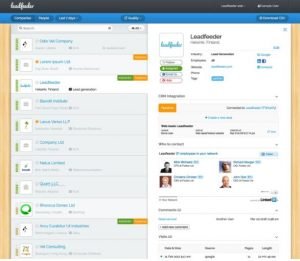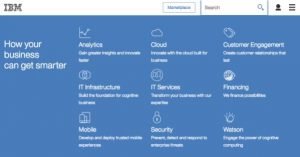Business owners spend enormous amounts of time, energy, and money on generating web traffic. They devote huge portions of their marketing budgets solely towards bringing in eyes and clicks. What they’re finding out, though, is that clicks aren’t enough. Simply generating views does not necessarily translate into actual leads. Unless you can find a way to turn your web traffic into qualified leads, your online advertising efforts will be for naught.
The key here is to turn traffic into qualified leads—not just any lead will do. A qualified lead is someone who is highly likely to become a great customer if you can manage to close the sale. It’s usually someone who has arrived on your site with the express purpose of purchasing something from your business, but it can also be anyone who exhibits signs—purchase history, interests, company size, location—that they’re a good match. Optimizing your published assets and messaging for these leads allows you to weed out peripheral traffic and tailor your lead nurture interactions for those who are likely to become customers.
This, of course, is easier said than done. If everybody knew exactly how to appeal to their target audience, we’d be living in a completely different world. As it is, we must dig a bit deeper and expend a fair amount of effort to identify quality leads amid the crowd of traffic on your website. Fortunately, there are steps you can take that will go a long way in ensuring you’re making the most of your traffic. While there’s no magic formula that will convert each click into a guaranteed sale, implementing the following guidelines into your online marketing process will allow you to become efficient and effective, thereby leading to a higher number of clicks being translated into business.
Take Advantage of Analytics
A good first step in your process is to take advantage of the analytics data at your fingertips so you can see how your audience finds you and what they do on your site. Google Analytics, for example, will provide you with valuable information regarding who constitutes your web traffic, and more importantly, your sales. In order to make this process more effective, take a look at website visitor tracking software company Leadfeeder. This tool comes in especially handy for B2B companies as it will show you exactly who is visiting your website, allowing you to tailor your company’s online experience to appeal to them.

By using analytics to find out who your visitors are, alongside information about the companies they work for, you can determine who’s most qualified and reach out to them via social media. Then you can see if there’s anything you can do to help them. It’s impossible to make a customer out of everybody, so use the data available to you to focus on nurturing relationships with the people you know are most likely to become happy, loyal customers.
Make It Easy for Your Customers
Once you gain a decent level of knowledge about who your visitors are, you can start finding ways to draw them back to your website – and keep them there. As a business owner, you’re only as successful as your ability to provide something of value to people who need it. In the case of your online presence, you should meet needs through your content in addition to your actual product.
For example, if you offer social media management services for businesses, in addition to publishing content that speaks directly to the quality of your services, it’s a good idea to publish informative and educational content that’s useful to businesses that need help with social media. You can publish your take on how businesses can maximize the impact of their social presence, the various benefits of social media engagement, and the latest trends in social media tactics.
Perhaps the best example of a company that does this well in the social media space is Buffer, a social posting dashboard app with a wildly popular blog. Using the share count data available via Buzzsumo, it’s easy to see how perfectly suited the Buffer blog’s articles to the audience that the company wants to attract.

Buyers often search for answers to their pain points before searching for specific businesses that can provide solutions. Publish content that answers their questions and next thing you know, you’ll have gained a qualified and engaged lead without that lead ever having consciously looked for your business!
Create Top-Notch Content
For all the research you do and all the care you take to target exactly the right audience, your work will be for naught if the quality of your content falls anywhere short of exceptional. In every aspect of content creation, make sure that you’re only publishing the best.
One thing that business owners are finding out in droves is that consumers are smart—they have nearly unlimited options available to them, and they can discern quality. Therefore, producing well-made and valuable content is a top priority as it shows your customers that you’re focused on them.
This is why the most engaging “lead magnet” content always focuses on the audience, as opposed to the publisher.

Additionally, consumers will associate high-quality content with a high-quality product. Take IBM, for example. They’ve impressed viewers and consumers with material in the form of advertisements and web content that lives up to the standard of their actual product, cultivating a reputation that draws in customers.
Start Qualifying and Closing
Good content has the power to become a calling card for your business. It will improve your SEO and will help you build a sterling reputation. Most importantly, it will allow you to retain visitors and convert them into qualified leads, preparing your audience to do business with you.
This is a Contributor Post. Opinions expressed here are opinions of the Contributor. Influencive does not endorse or review brands mentioned; does not and cannot investigate relationships with brands, products, and people mentioned and is up to the Contributor to disclose. Contributors, amongst other accounts and articles may be professional fee-based.

